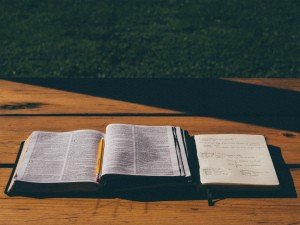 Throughout their college years, students deal with lots of reading assignments. The amount of reading often exceeds the time resources that students have. Fortunately, they know how to cut the costs on college textbooks because there are a lot of them to buy. You might think at first that, in order to be successful and get good grades, you should buy and read everything you’re assigned. Instead, the real academic success depends not on how much you read, but on how much important information you get from reading. While your professors insist that you should read everything, smart students understand that it isn’t the way to learn. In this article, we’ll take a look at some tips from smart students on how to deal with a lot of reading without having to read absolutely everything. The trick is to get the juice out of your textbook and to do it as efficiently as possible.
Throughout their college years, students deal with lots of reading assignments. The amount of reading often exceeds the time resources that students have. Fortunately, they know how to cut the costs on college textbooks because there are a lot of them to buy. You might think at first that, in order to be successful and get good grades, you should buy and read everything you’re assigned. Instead, the real academic success depends not on how much you read, but on how much important information you get from reading. While your professors insist that you should read everything, smart students understand that it isn’t the way to learn. In this article, we’ll take a look at some tips from smart students on how to deal with a lot of reading without having to read absolutely everything. The trick is to get the juice out of your textbook and to do it as efficiently as possible.
Starting the Chapter
First of all, right before reading the assigned chapter, try to pay attention to the objectives at the beginning of the chapter. Then go to the summary or the key points at the end of this chapter. The objectives will tell you what you should focus on the most, and the summary points will suggest what exactly you should know to be prepared for the class or the upcoming test.
Everything That Stands out
When you’ve done with the objectives and the summary, it’s time to tackle the chapter itself. When reading the body of the chapters, you shouldn’t pay attention to the entire text. It is better to concentrate on everything that “stands out”. That would be paragraph titles and subtitles, bolded terms and new concepts, or italicized fragments of text.
Read Graphs and Tables
Next, here is one really important tip — pay attention to the visuals. Textbooks are often stuffed with visual information in the form of graphs, charts, tables, or pictures. They often contain something important or help you understand the material better. What’s more, they are always explained below through the means of text. It basically repeats the information in a graph. So, read the graphs and skip those large pieces of text which explain the visuals.
The First Two Sentences
Textbooks are structured in a very formal way. That is the one that obliges us to start each paragraph with the topic sentence. It is, in fact, the most important element of the paragraph: it states the main issue discussed in this paragraph. The second sentence usually provides an explanation. In case the information you’ve obtained from those two sentences was not enough for you to understand the chapter, you might want to read the entire chapter in order to get a whole picture and to be better prepared for the class.
Take Notes
Taking notes is essential for those who want to practice active reading, rather than passive reading. Reading actively means that you’re interacting with the text. Don’t just write down exactly what you see in the book; always paraphrase it in your own words. This tip is especially helpful when you are doing a writing assignment based on the textbook you need to read.
Despite the fact that most time-saving techniques and strategies help you become more efficient in your studies, they do not help in absolutely every case. When you read your textbook and skip through the main points, it is always better to spend a little more time on some extra reading than missing the point altogether. In other words, you should always look forward to saving some time, but you should also be prepared to your tests and exams. Always make sure that you are actually learning, not just reading.